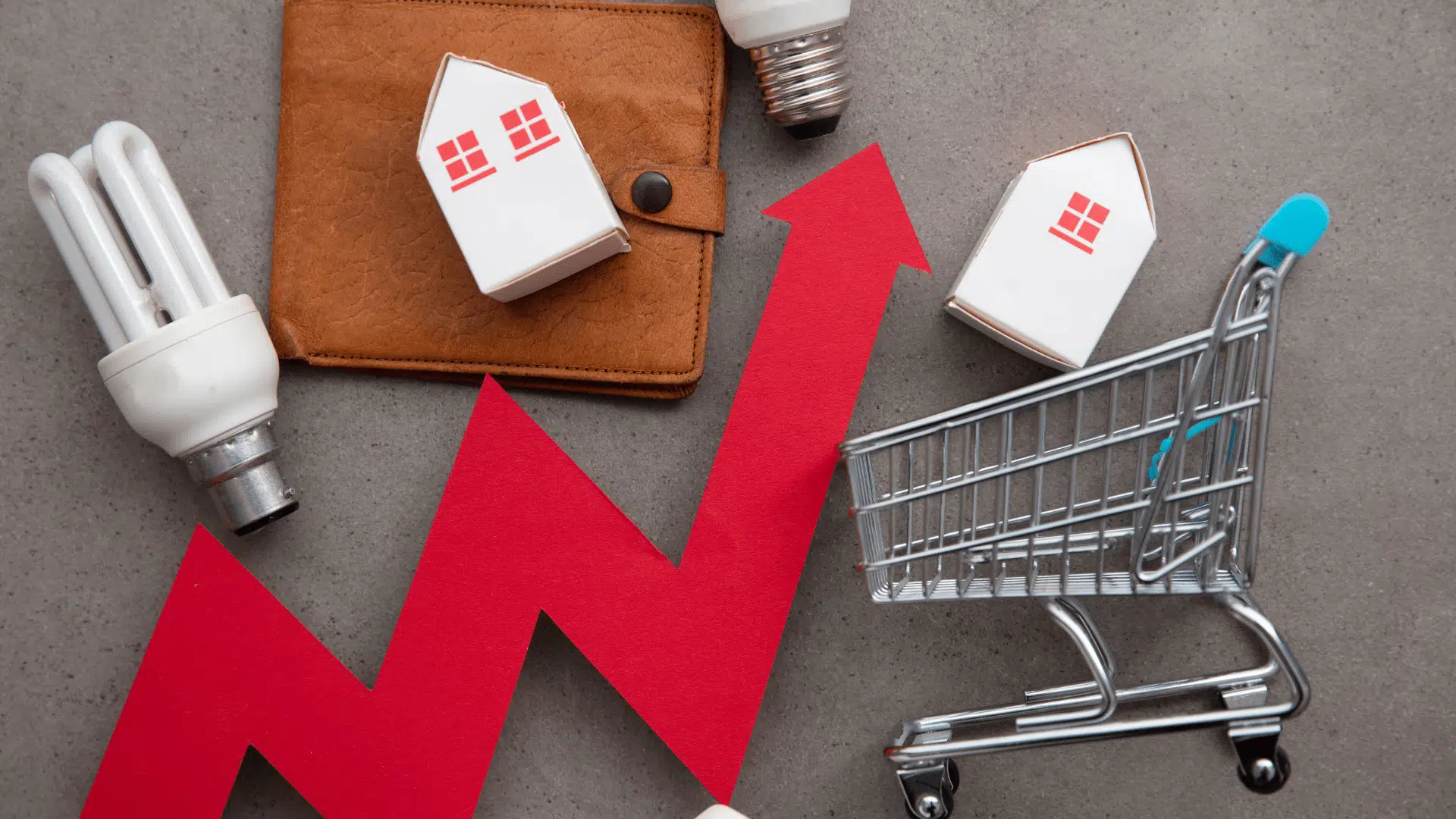“Is It Time To Increase My Gym Membership Prices?”
We realise you’re busy, so there’s 2 parts to this blog.
If you want to read the full context behind why raising prices is a good idea, then just keep reading.
But if you want to skip ahead to our 12 tips to increasing your gym membership prices, then click here to skip ahead!
For the last decade, the fitness industry has been a battle between the independent gyms and the large chain giants with their budget pricing doctrines in what seemed like an ever-deepening race to the bottom.
It is a story we have seen time and time again in the fitness industry. The arrival of this type of a huge chain Gym in a city or town indicated a significant shift and for the greater part of ten years these huge companies have dictated the pace of the industry.
But this was never a system that could last forever. Only a monopoly is able to put up their prices with anything resembling confidence.
And a business strategy based around ever-lowering prices will only ever work when times are good.
Part 1: The State Of The Market (or why times aren’t so good for the big guys)
Between the aftermath of the Covid-19 pandemic, increasing energy costs and property rent spikes, it is safe to say that at the very least, the good times are on hold.
This represents a chance for a correction within the fitness industry for gym and club owners.
The cost of living is undeniably rising and rising at an alarming rate. Not only that, but rising energy prices are presenting a very real squeeze to the margins of Gyms and fitness clubs alike, regardless of size.
And yet due to the increasingly competitive nature of the sector, the question is still only tentatively asked… Should we be raising prices?
The answer is, of course, yes!
The price war that has come to define the industry can only abate in these trying times. While it is a model that allowed for rapid growth, it was one driven by very specific economic and technological factors.
This shift prompted positive and negative change within the industry. The increased focus on automation is just one example of a development that was hypercharged by the rise of the budget chains for both better and worse in different areas.
But now that period of growth has subsided and both the chains and independent Gym owners are left with a quandary. There are relatively few gains to make through automation now. The Covid-19 pandemic and resultant lockdowns caused unprecedented disruption.
Pictured: The large gym chain business strategy
The model that previously seemed unassailable has reached the end of its artificial boom and now we have to ask the hard questions about where the industry goes from here and the culture shift that will have to occur when it comes to pricing.
As hinted at the beginning of the article, it is actually telling that the industry is even approaching this debate so tentatively, when before so few gyms would even be considering a price rise, at the risk of turning members away.
Ultimately this approach is out of touch with economic reality. As inflation continues to bite, energy costs rise and rents increase, it is only natural that some of this should be passed onto the customer. As stated previously, the idea of ever-reducing prices is a mantra that can only exist in times of sustained prosperity. In a contracting or disrupted economy, it is neither prudent nor good business.
Consumer Perceptions Have Changed!
While every price increase must be communicated effectively so your Gym patrons understand the reason for the decision, your members do not exist in a vacuum. Everyone is aware of the current situation to a lesser or greater extent. Consumers are seeing prices rise in different parts of their life, they are reading about it in the news and dealing with it in their own careers.
Context is king and in many ways the current context has the consumer prepared for a price increase in a way they haven’t been since 2008.
We must reinforce that it is still necessary to control and communicate the narrative for any price increase measures, but the position of increasing prices will be easier to justify.
And Sorry, But We Have To Mention Covid Again…
It is safe to say that Covid-19 has had a huge impact on our economic reality and we’d be remiss to not talk about it in the context of price increases in 2022. Quite simply, we don’t believe there has been an event in recent memory that has changed consumer habits so profoundly.
As such, the picture that is starting to emerge in our research is one of a post-Pandemic landscape that is focused on the creation of value, collaboration and community that will really make the difference.
The lockdowns showed us the value of socialisation that we had understandably taken for granted previously. (A complete lockdown of society having seemed previously unthinkable).
Now that the world has opened up and would appear to be staying open, we are seeing consumers that care more for interacting with friends and engaging with their community. We believe that these Independent Gyms, more likely to be locally focused and independent, will flourish during the post-Lockdown era. And the evidence is on our side.
As such, this makes for a greater justification for raising prices. The value of the product these Gyms provide will be more valuable. The operational costs are increasing. Consumers are looking for brands that they can rely on for more than just a service now. Frequenting an establishment now also carries the implication of protecting health.
Who is a consumer more likely to trust in that task? A soulless automated chain or a trusted, local Gym at the heart of the community?
It is these factors that we believe will effect the dynamic of price increases in the fitness industry in 2022 and beyond. As we hinted at earlier in the introduction, we believe this is one of the key factors that has taken the tempo of control in determining prices away from the rock-bottom chains.
There’s A Greater Focus On Health In The Gym Now
And finally on this checklist, there is just a greater focus on health in 2022 than there has ever been. The Covid-19 Pandemic kicked the desire for fitness into overdrive. No longer was it just a goal to strive for, it became linked to survival.
While it might all start to feel surreal now we are out of lockdown, for 18 months everyone from the government and NHS to the supermarkets were telling the public to stay fit and healthy.
This really supercharged an existing trend for health and fitness that we have not seen abate.
Not only that, but we have no reason to assume that this new furore will disappear anytime soon. The historic survey data has only ever shown an increase in the importance of health and fitness within the public consciousness over the last twenty years. No data has shown thus far that the lockdown focus on fitness is receding.
In terms of raising prices, this means that gym and fitness club owners now hold a commodity with increased social and societal stock than ever before.
The Philosophy Behind Raising Your Gym Prices
So why have we spoken at length about the reasons that justify raising your prices?
Because the reasons that a gym or fitness club is able to identify for a price rise will be a cornerstone of how they communicate this to their members.
The crux of the matter is, if a Gym does not believe that the service it is providing isn’t worth it, it’ll be very hard for the leadership to justify a price increase.
So now we have discussed the state of the market, the increasing hardships facing all businesses, the Covid-19 pandemic and the role of the price wars in recent years.
With all that taken into account, it should now be easy to see whether or not the justification for a price increase exists within any given gym or fitness establishment.
Part 2: How Should A Price Increase Be Implemented At Your Gym?
So now we are going to focus on how to implement that price increase.
The methodology behind both the increase itself and how it should be communicated out.
Price Rise Tip 1: The Hard Maths Behind Your Health Club’s Price Rise
In this section we will be looking at the different methods that can be used to increase prices. Between different tiers of members, off-peak and on-peak, OAP and Students, premium members and concessions, there exists a multitude of different price points.
Even without all of that, there are still hundreds of permutations possible when it comes to a price increase.
We are going to look at some of the most obvious and intuitive and work out their viability in the current market. We will make reference to what was covered in part one to justify or dismiss certain decisions.
It is important to remember that just because a price increase method seems logical or has been used in other industries, does not mean it is necessarily a fit for the fitness industry. Increasing prices by 33%, 50% or 100% is a surefire route to disaster unless you have been seriously undercharging for a long time.
Let us examine some potential methods of raising prices that mix in a little communication/spin.
Price Rise Tip 2: Pay Up-Front For A ‘Fixed Rate’
One way we have seen be quite effective is something derived from ‘price-locking’ seen in the energy industry, but with a fitness spin.
Communicate to your members the reasons we have discussed for the price rise regarding rising energy, rents and increased market instability. State the necessity of a price increase but state that this will not be implemented for one month.
If, within that month, a member is willing to commit to another 12 months, they will effectively be able to keep the old price for the whole year. Once the year has elapsed, they will be charged the new price. This will demonstrate that you are being proactive and rewarding loyalty and commitment to your Gym. Furthermore, if the offer is picked-up, it will result in a significant amount of revenue early on within this price increase initiative.
Price Rise Tip 3: Communicate With Your Members & Give Them Plenty of Time
On the subject of communicating a month ahead of time. We want to reinforce that in order to appear professional and in control of this price increase, we would recommend that a month is the minimum amount of forewarning a gym should give their membership of a price increase.
Ideally, this should be a two month timespan. An increased timespan works well with the above strategy as well, as the longer a member has to mull over their financial situation, the more appealing locking in a year of ‘cheaper’ membership will seem.
Price Rise Tip 4: Provide Members With A Fixed Rate Follow-up
As a final word on the subject of the fixed rate up-front price increase, a Gym shouldn’t be afraid of utilising their list of former members.
It is an ideal time to contact lapsed or cancelled memberships. As we stated earlier, a lot has changed and members who cancelled before or during the Covid-19 pandemic and the lockdown may feel differently now. Additionally, it will make them feel part of the loop and connected to the news cycle of the Gym.
It will also be a communication that isn’t overtly about trying to sell.
It will be about the price increase, with the option to secure 12 months membership for cheaper than it would otherwise be available.
Whilst a small difference, psychologically it can make all the difference.
Additionally, do not be afraid to communicate the 12-month offer several times. If a gym has communicated the raise and the offer two months ahead of time, we would say it is reasonable to remind members at least two additional times before the deal expires.
Price Rise Tip 5: Build Inflation Into Your Price Increases Today
We would recommend that essentially any price increase initiated by gyms and fitness clubs at the moment should cite inflation as a primary reason.
With that in mind, why not go one step further. Reinforce the causal link of this price increase to inflation by benchmarking it against inflation. If you raise prices by 33% or 50% of the total current inflation, say, 6% for example, you are effectively communicating that while you are increasing prices, relative to the market, you are still absorbing some of the costs.
This way the gym gains additional revenue, and your customers understand that you have protected them from part of the inflationary costs.
By crafting your increase around inflation, you are putting your money where your mouth is. This should leave little doubt in the mind of your customers that your motivations are in reaction to the increased cost of living. To any reasonable consumer, this will be taken as a positive on an unavoidable economic reality.
Price Rise Tip 6: And Think About Your Next Price Increase
If a Gym elects to go for this route, it might be worth considering raising the price of all services in line with this figure. Any additional workout supplements, drinks or associated accessories that you sell and have control over the price point of.
By taking this approach, it is akin to ripping the band-aid off all at once and it is an action that is legitimated by your reasoning.
Conversely, if a fitness club does not wish to or need to increase the price of these additional services, it would be prudent to highlight this. It can be stated that due to the increase in membership prices, all associated prices will stay the same despite the new economic reality. This is once again a way to put a positive spin on a price raise outcome.
Price Rise Tip 7: Know Your (Local) Market
While this was touched on in the introductory section, it bears repeating here.
Context is king and no context is more important than the local market landscape that a Gym or fitness club is competing in.
Just prior to a price raise is the exact time for a gym to refresh its local market research.
A gym should strive to understand not only what the current membership price is for all Gyms and across all price points, but also how that contrasts with their historical pricing.
This will be a clear way to tell whether all Gyms that are considered to be competitors are also raising their prices and by what margin. It is important to understand the level of drop-off that can be expected and where they might go.
It will also help legitimise the price increase actions undertaken by a Gym.
Price Rise Tip 8: Make Sure Your Staff Are On The Same Page
No-one likes talking about price rises. The silent resignation that we have when the electric or council tax…So…
Train your staff on how to handle the price conversation!
No-one feels natural or comfortable while fielding questions regarding a price increase, especially during circumstances like the ones we find ourselves in. Spend time with your staff briefing them on the main reasons.
As these will have all been laid out in your e-mail and social media communication, it should not take too much work to collate these into material for your staff to learn from. If your staff are not briefed regarding this, bad interactions with customers who have taken the price rise poorly could work their way onto social media.
Price Rise Tip 9: Spread The Costs OR Add Value
When it comes to additional options and bolt-on amendments to Gym membership, there is room to manoeuvre in the realm of price increases. The inclusion of additional bolt-on options to a Gym membership can also be used to work around to give the impression of added value or a fair trade-off.
In one scenario, if you include a set number of sessions with a personal trainer as part of your membership with the increase, this helps give the impression of compensation for the service being provided. In turn, this will make members not only more likely to stay than if nothing is offered, but also more likely to engage with the gym or fitness club.
Conversely, by removing certain benefits to new members, you will be able to minimise the price increase for newer members due to value saved. However, this should be implemented carefully, and rarely, if ever, on existing members.
Price Rise Tip 10: Keep Your Price Increases Steady
Do not announce that the price increase is only temporary. No-one can predict what the future may bring and any goodwill gained from stating this will not equal the risk of being unable to fulfil this pledge.
While there are scant few reasons to reduce your price, unless your price increase has significantly priced you out of the market, it should never be pledged ahead of time. Instead, it should be communicated as a pleasant bonus.
In practicality though, if a Gym did their market research correctly, it would take an immense reason to reduce prices after they have recently been raised.
Price Rise Tip 11: Prepare For Members To Abandon Ship
It is inevitable that some members will leave during a price increase. But if communicated effectively this number should not matter. The price increase should be structured in such a way that the increase is able to mitigate any potential dropoff.
As the old adage goes, you can’t please everyone, and some members will take any reason to quit.
Others will have been scaling back their expenditure irrespective. It is important to deal with these customers fairly and politely.
If a gym doesn’t already have a ‘lapsed/previous’ members mailing list, this is the ideal time to create one.
A gym should monitor the numbers that leave through their CRM system as that will be a key indicator as to whether they have done their market research and communication correctly.
Price Rise Tip 12: Remember That It All Adds Up
Earlier we covered the idea of increasing prices just for new members, or increasing the price and offering the old membership rate to all members.
These are tried and tested methods that we have seen in the fitness industry. However, we’d like to end our article on this practical piece detailing one of the many methods that can be used to implement a price increase.
Instead of using percentages, or only charging new members, one method involves a price increase of £1 per month for each member.
The thinking here is that this sum won’t seem a lot to each customer and isn’t represented as a percentage on purpose.
If you take a club with exactly 750 members, this little £1 increase transforms into £9000 a year prior to tax.
Naturally this can vary depending on the number of members and the average price paid at a club. As another example, we shall say a club has an average Gym membership of £40. Certain tiers come in on either side of that total, of course. Now we say that this club increases each membership, irrespective of tier, by £2.
A club where someone is already paying £40, providing it meets the criteria laid above, should not see significant dropoff from this.
But in turn, they will receive a windfall of over £1.5k a month, or nearly 20k prior to tax in a given year.
As such, you can understand why this method can quickly cope with any small amounts of dropoff that may occur if implemented, communicated and handled correctly.
Using direct debits, it becomes easy to arrange a price increase across your entire customer base as we’ve just described.
Interested in this method? Then you might be interested in Ashbourne Membership Management. Here at Ashbourne, we have twenty five years of experience in the industry, getting our partners the money they deserve, each month, every month.
Interested in finding out more? Then arrange a demo and gym consultation with us today.
In Conclusion…You Can Do This!
While we understand the aversion that many Gym and Fitness Club owners have to raising their prices, it is a decision that, given the state of the economy, they should be considering.
No business can maintain the same price points for their entire operational lifespan, that sort of inflexible doctrine will only result in damaging the long term viability of the gym.
Maintaining prices only damages your business and your profits.
By failing to react to the increase in the value of the commodity that is fitness, a Gym is passing up profit at a time where it can scarcely be afforded.
If a Gym truly believes itself to be an institution that adds value to the community and its membership, there is no reason they shouldn’t have the confidence to ask for a little more.
As we stated at the beginning, the era of the budget club dictating the pace is over. It is a system that cannot survive contact with market contractions. Now the market must seek value generation, and to ensure that the proper price is being paid for that value generation.




















